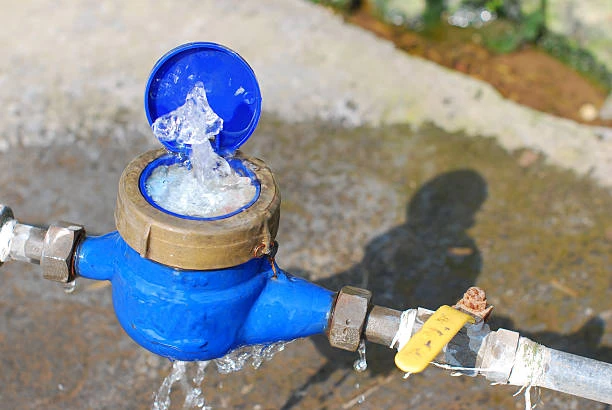Introduction to Smart PPR Piping Systems
Smart PPR (Polypropylene Random Copolymer) piping systems represent a significant advancement in plumbing technology. These systems integrate sensors and monitoring devices to ensure optimal performance. Remote monitoring offers real-time data, enhancing maintenance efficiency and reliability. The use of plastic push fit plumbing fittings further simplifies installation and provides leak-proof connections. This article explores the benefits, technology, and implementation of remote monitoring in plastic push fit plumbing fitting.
Advantages of Remote Monitoring
Remote monitoring brings numerous advantages to smart PPR systems. First, it allows for real-time data collection. Users can observe pressure, flow rates, and temperature from anywhere. This accessibility facilitates quick decision-making when issues arise. Additionally, remote monitoring reduces the need for frequent physical inspections. Maintenance teams can focus on areas needing attention rather than checking every inch of piping. Moreover, it leads to reduced operational costs by minimizing downtime and preventing leaks.
Role of Sensors in Smart PPR Systems
Sensors play a crucial role in the functionality of smart PPR systems. These devices can detect changes in pressure, temperature, and flow. For example, a pressure sensor can trigger an alert if levels drop unexpectedly, indicating a potential leak. Integrating sensors with plastic push fit plumbing fittings enhances system reliability. These fittings enable easy installation of sensors at various points in the piping network. The seamless integration ensures accurate data collection without compromising system integrity.
Data Visualization and Analysis
Data visualization tools enhance understanding of the monitored information. Users can access dashboards displaying real-time data in an intuitive format. Graphs and charts help identify trends and anomalies quickly. For instance, a sudden spike in temperature may indicate a blockage. Advanced analytics can predict potential failures based on historical data. This proactive approach allows maintenance teams to intervene before issues escalate, ensuring uninterrupted service.
Examples of Successful Implementation
Several industries have successfully implemented remote monitoring in their PPR piping systems. For example, a large university campus integrated smart piping technology to manage its water supply. The system used sensors to monitor flow and pressure in real time. Consequently, they reduced water waste and improved maintenance response times. Similarly, a manufacturing plant adopted smart PPR systems to track coolant flow in machinery. This implementation led to increased efficiency and lower operational costs.
Challenges in Remote Monitoring
Despite its advantages, remote monitoring comes with challenges. One primary concern is cybersecurity. As systems connect to the internet, they become vulnerable to hacking attempts. Implementing robust security measures is essential to protect sensitive data. Additionally, there can be compatibility issues between different sensor brands and the existing infrastructure. Ensuring seamless integration of plastic push fit plumbing fittings with monitoring devices is crucial for success.
Future Trends in Smart PPR Systems
The future of smart PPR piping systems looks promising. Innovations in sensor technology will enhance data accuracy and reliability. For instance, advanced sensors with AI capabilities will predict failures more effectively. Moreover, the integration of IoT (Internet of Things) will lead to smarter plumbing systems. These systems will communicate with other building management systems, creating a more connected infrastructure. The continuous development of plastic push fit plumbing fittings will further streamline installations, making smart systems more accessible.
Conclusion: The Path Ahead
Remote monitoring of smart PPR piping systems revolutionizes plumbing maintenance. The real-time data and proactive insights lead to improved efficiency and reduced costs. As technology advances, the integration of smart systems will become more prevalent. Embracing innovations in sensors and plastic push fit plumbing fittings will ensure reliable performance. Overall, the future holds great promise for remote monitoring in piping systems, ultimately benefiting various industries.
IFAN Products international standards
IFAN products strictly adhere to a comprehensive range of international standards, encompassing ISO 15874, EN 15874, ASTM F2389, DIN 8077/8078, GB/T 18742, NBR 15884, ISO 15494, EN ISO 15494, GB/T 19472, NBR 15494, ASTM 2846 (501), DIN 8079/8080 (502), ASTM F441/F441M SCH80 (503), DIN (504), DIN (505), GB/T 18993, AS/NZS 1477, CSA B137.6, NSF/ANSI 14, TIS 17-2532/1131-2535, BS 3505, BS 4346 (801), ASTM D1785 SCH40 (802), ASTM D1785 SCH80 (803), DIN (804), GB (805), GB (806), GB(901), DWV(902), ASTM D2665 (903), along with ASTM D2241, D2665, D2729, and F441/F441M series, ISO 1452, EN ISO 1452, DIN 8061/8062, GB/T 10002, AS/NZS 1477, JIS K6741, CSA B137.3, and other national and industry norms.
Connect
IFAN is a Chinese manufacturer of plastic pipes, fittings and valves with 30 years of experience. If you are interest in IFAN copper fittings, copper valves, plastic pipes and fittings, please contact us. IFAN offers you a variety of standard pipes to meet your specific needs. Click below to learn more about IFAN’s wide range of affordable and cost-effective valve products and piping system related products.
We will reply your email or fax within 24 hours.
You can call us at any time if there is any question on our production.
For more information,pls visit our webside https://waterpipefitting.com/
Pls Mailto: [email protected]
Whatsapp: +86 15088288323





Recent Comments